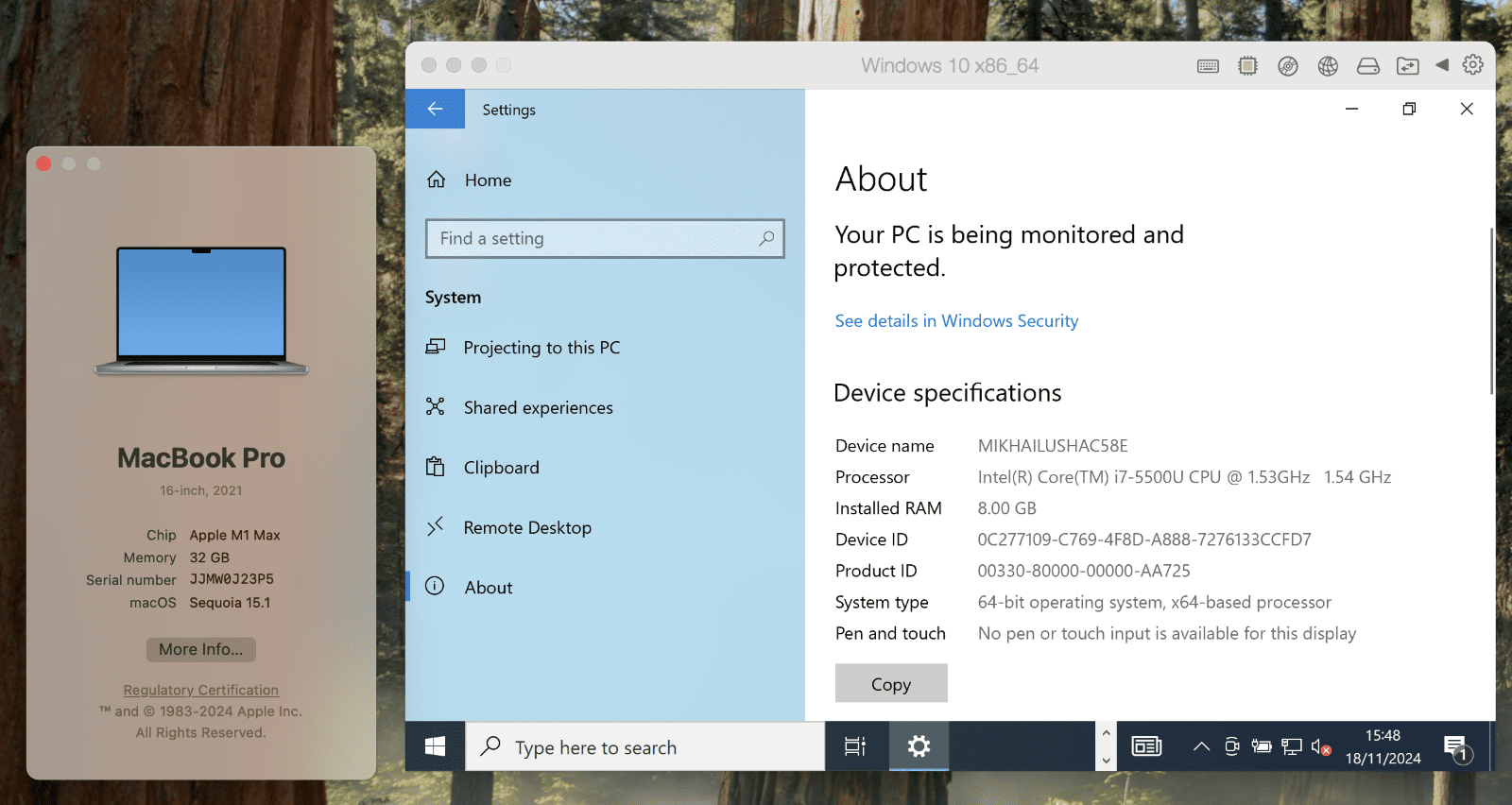Virtualization software like Parallels and VMware Fusion give Mac owners the ability to run Windows and Linux on top of macOS, but for Apple Silicon Macs, that support was limited to the Arm-based versions of those operating systems. And while Windows and Linux both support some level of x86-to-Arm app translation that attempts to maintain compatibility with most software, there are still plenty of things that demand an Intel or AMD processor with the x86 instruction set.
Last week, Parallels released a new update that partially resolves this problem: Users of Parallels Desktop Pro 20.2.0 now have access to x86 operating systems via an “early technology preview” of Parallels’ “proprietary emulation engine.”
The technology preview is currently limited to certain 64-bit versions of Windows 10, Windows 11, and Windows Server 2019 and 2022. Parallels also says it has tested several UEFI-compatible Linux distributions, including Ubuntu 22.04.5, Kubuntu 24.04.1, Lubuntu 24.04.1, and Debian versions 12.4 to 12.8. Fedora will install, but it’s unstable. 32-bit versions of operating systems, as well as older versions of Windows like Windows 7 or 8, aren’t supported.

Parallels running the x86 version of Windows 10 on an M1 MacBook Pro. Parallels’ virtual CPU appears to identify itself as a 5th-generation Intel Core laptop processor.
Credit:
Parallels
For Windows 11 and supported Linux distros, you can run existing virtual machines using the technology preview, but you can’t set up new ones—useful for anyone migrating from an Intel Mac with virtual machines they’d like to keep. If you’re trying to set up a new virtual machine, the only officially supported operating systems are Windows Server 2022 and Windows 10 21H2, though there are workarounds available for Windows 10 22H2 and Windows Server 2019.
You won’t be able to set up fresh copies of Windows 11 or some versions of Linux because the technology preview doesn’t support SSE4.2, additional CPU instructions that became common in Intel and AMD processors in the early 2010s. This also means that Windows 11 24H2 VMs are entirely unsupported, since the 24H2 update requires these CPU instructions to work at all.

